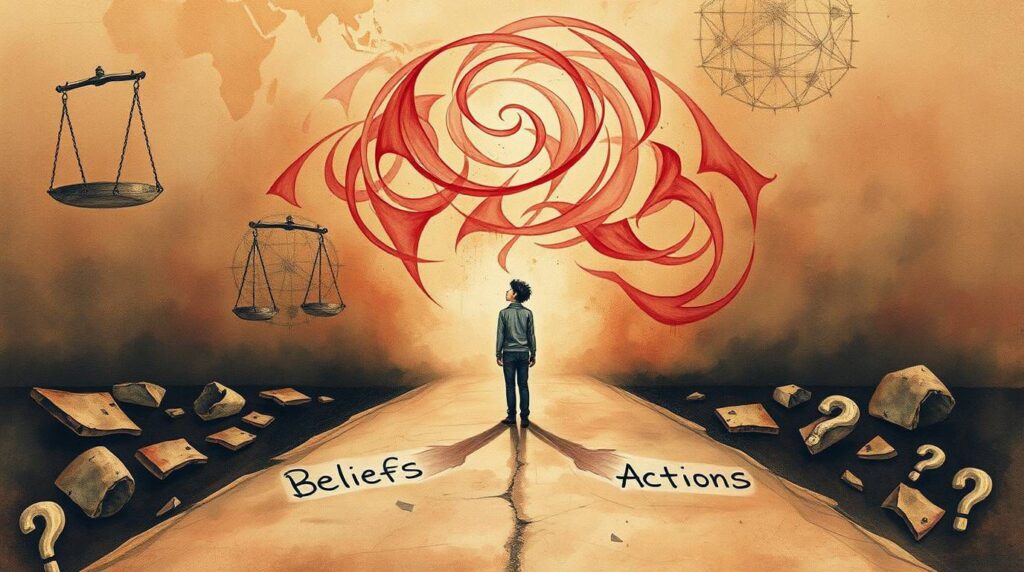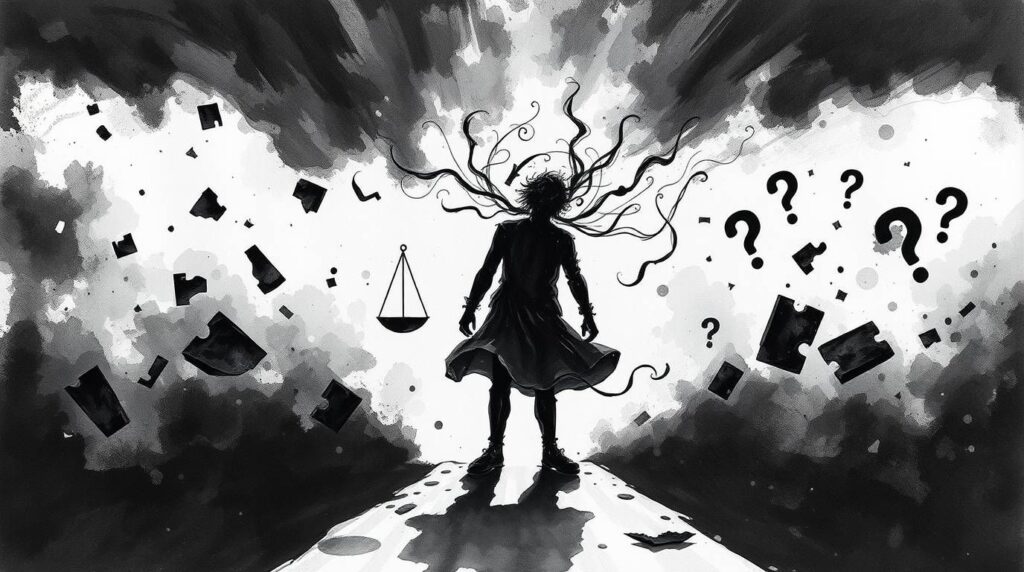What Triggers Cognitive Dissonance 2025
What Triggers Cognitive Dissonance 2025
🧠 Introduction to Cognitive Dissonance
Cognitive dissonance is one of those psychological ideas that sounds a little complicated at first, but once you get it, it starts making sense of so many things we do every day. Whether it’s feeling awkward after doing something we didn’t believe in, or changing our thoughts just to feel better, it all comes down to one core idea: our brain hates contradictions.
🎓 Book Definition (University-Level Answer)
Cognitive dissonance is a psychological theory developed by Leon Festinger in 1957. It refers to the internal discomfort or mental stress experienced by a person when they hold two or more contradictory beliefs, ideas, or values — or when their behavior conflicts with their beliefs.
This internal inconsistency creates psychological tension. People are then motivated to reduce that tension by adjusting their thoughts, beliefs, or behaviors to bring everything back into alignment.
🔍 Common Triggers of Cognitive Dissonance
- Conflicting Beliefs
- When someone holds two beliefs that contradict each other.
- Example: Believing that being eco-friendly is important but still using disposable plastic regularly.
- Behavior vs. Belief Conflict
- When actions don’t align with values or morals.
- Example: A person believes cheating is wrong but cheats on a test.
- Tough Decisions
- After choosing between two equally appealing options, dissonance can occur.
- Example: Picking one college over another and doubting if it was the right choice.
- Effort Justification
- When someone puts in effort for something that turns out disappointing.
- Example: Spending money on an expensive course that wasn’t helpful.
- Forced Compliance
- When someone acts against their values due to external pressure.
- Example: Telling a lie at work to cover up a mistake, even though honesty is valued.




💡 Easy Explanation (Like You’re Talking to a Friend)
Let’s ditch the fancy terms and talk like real people.
Cognitive dissonance is basically your brain throwing up a red flag when you do something that doesn’t match what you believe.
Imagine you’re trying to eat healthy. But one day, you walk into a bakery and… bam! You eat a giant slice of chocolate cake. You feel kind of guilty afterward, right? That’s your brain saying, “Hold up — I thought we were eating healthy?” That weird, uncomfortable feeling? That’s dissonance.
To fix that awkward feeling, you might tell yourself:
- “It was just a one-time thing.”
- “I walked a lot today, I deserve it.”
- “Life’s short — I’ll be strict tomorrow.”
That’s your brain trying to patch up the conflict.
🙋 More Real-Life Examples
- You say lying is wrong, but you tell a white lie to avoid hurting someone’s feelings.
- You care about saving money, but you splurge on something unnecessary.
- You value education, but you skip studying to watch Netflix.
These are all dissonance moments. Your mind notices the mismatch and starts trying to fix it — either by changing your behavior, adjusting your beliefs, or coming up with a “good reason.”
🧩 Why It Matters
Cognitive dissonance affects our decisions, habits, and even our sense of self. When we notice the inconsistency, we either:
- Change our behavior
- Justify our behavior
- Change our beliefs
This is how people end up slowly changing over time — even if they don’t notice it happening right away.
📘 External Resource
Want to dive deeper? Check out the detailed article on Wikipedia: https://en.wikipedia.org/wiki/Cognitive_dissonance
🌐 Explore More from Our Blogs
- What If Emotions Could Be Programmed Like Software?
https://edgythoughts.com/what-if-emotions-could-be-programmed-like-software-2025 - How Does Social Media Impact Teen Mental Health?
https://edgythoughts.com/how-does-social-media-impact-teen-mental-health-2025
⚠️ Disclaimer (For Education Content Only)
The easy explanation provided is meant to help simplify the concept for better understanding. If you’re studying for an exam or writing an academic paper, please use the formal book definition and structure. Using only the simplified explanation may not earn full marks. We aim to make learning fun and relatable, but we are not responsible for marks deducted due to informal answers in academic contexts.
Why Sustainable Fashion Is Rising Fast 2025
https://edgythoughts.com/why-sustainable-fashion-is-rising-fast-2025/
Can Virtual Reality Treat Social Anxiety?
https://edgythoughts.com/can-virtual-reality-treat-social-anxiety/





